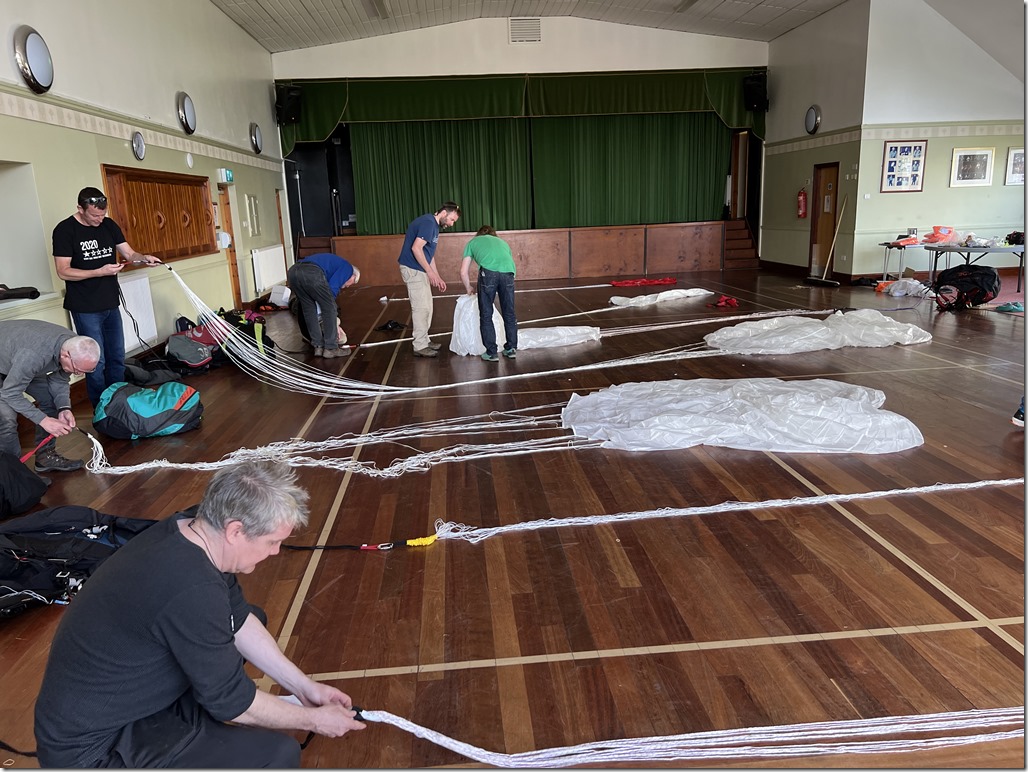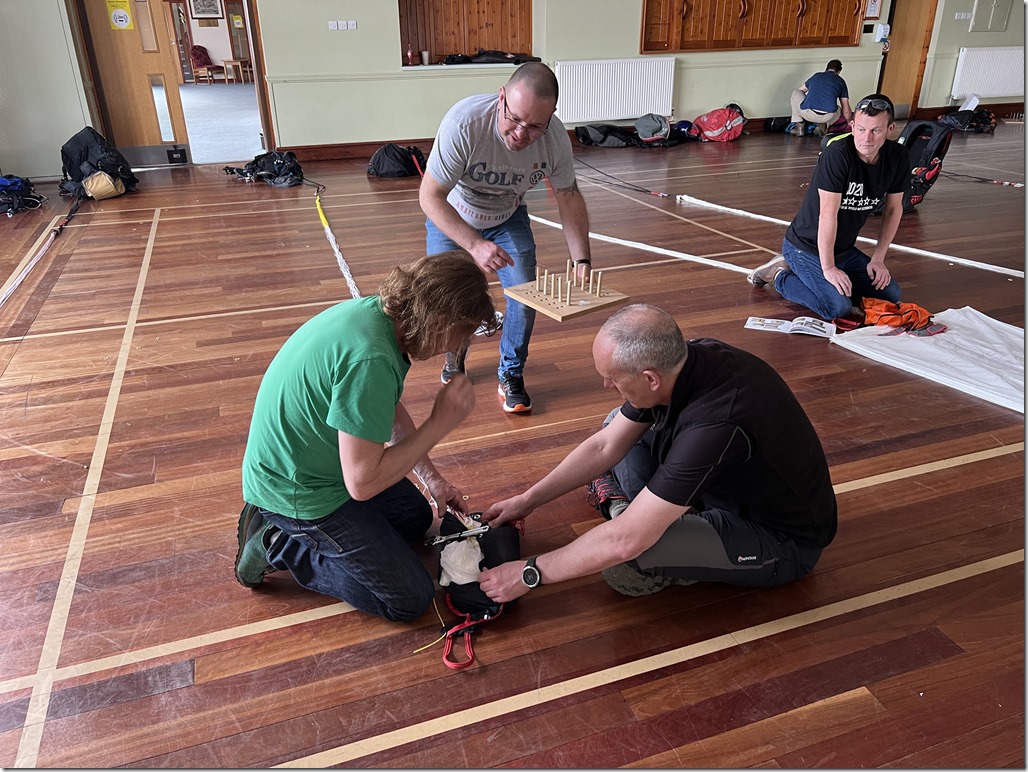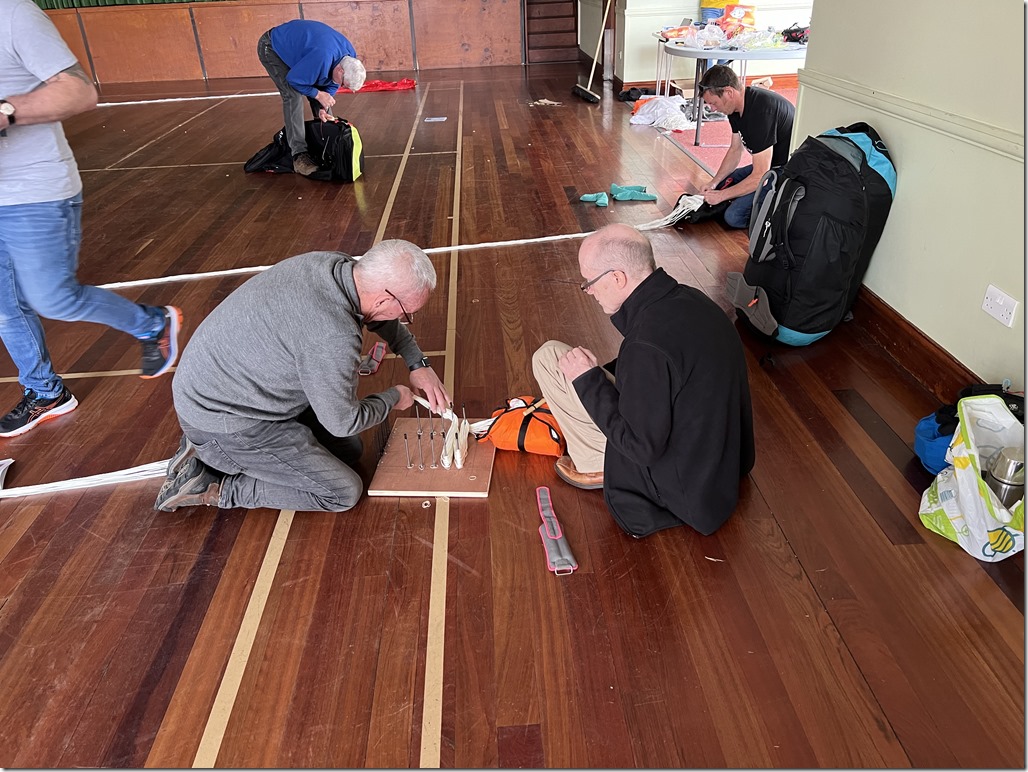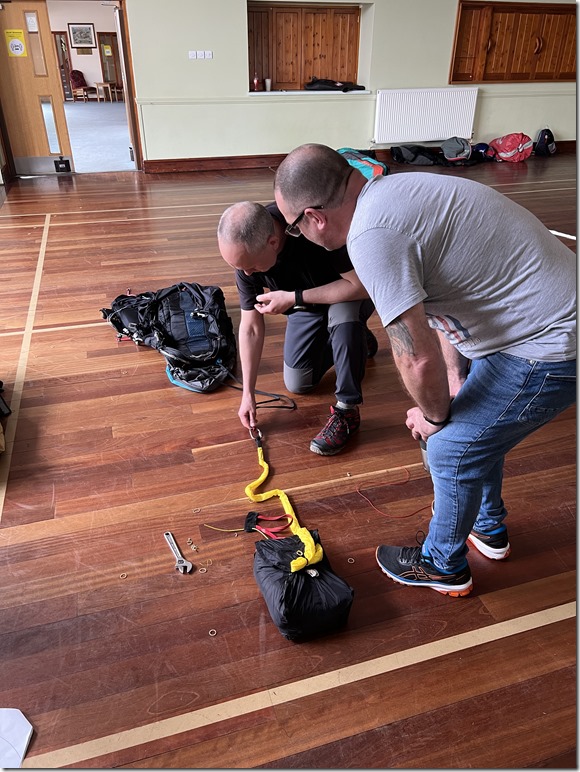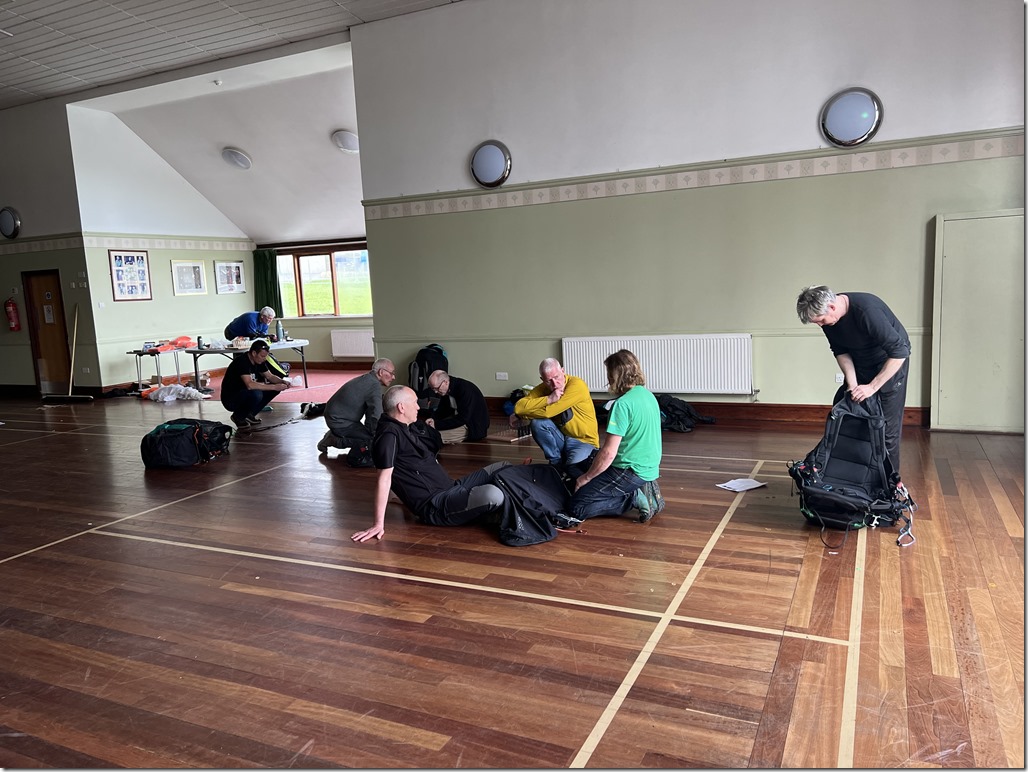Sadly we have had a serious incident involving serious injury to a paraglider pilot on Parlick, who unfortunately died a few days later, and our thoughts are very much with Philip’s family and friends and indeed all who were involved on the hill.
There will be a formal investigation into all the circumstances, and this is not the place to get into speculation about what happened, but I want to make some initial thoughts about what we can learn about managing incidents on the hills once they have happened. All of those dealing with it can hold their heads high for the exemplary way in which it was handled from start to finish, so now is the time to put together what might be useful guidance for such incidents in the future.
This will be a long and detailed message, I hope you will take the time to read it and consider what you could do immediately and what you could plan to do in the future to improve your chances of dealing successfully with a serious incident. We will shortly distil this into some succinct cards that people can carry in their wallets as a prompt list for emergencies.
Initial actions
If you are first on the scene, or witness a crash, remember the DRSABC mnemonic:
D – DANGER: is there danger to the casualty, to you, or to any third party? Think steep slope, power lines, flapping glider about to re-launch spontaneously (I have seen this happen to an unconscious pilot who then flew for several minutes more before the inevitable 2nd crash, producing much more serious injuries) water – waves or currents – and any other possible sources of peril. This is not a definitive list – each scenario will have its own dangers. Don’t grab flapping gliders by the lines with bare hands, grab the fabric; anchor hang gliders by the nose; don’t go jumping in and adding to the casualty list.
R – RESPONSE: this is the first step in establishing the level of consciousness of the casualty, but this is not the place to go into first aid training. Please consider going on a course every couple of years to keep up your skills.
S – SEND FOR HELP: Radio, Phone, Shout, Satellite.
ABC: this is covered by First Aid training – have you booked yourself on a course yet? The ability to recognise serious life-threatening conditions and possibly alleviate them could make all the difference in the first few minutes.
D and S imply that it is best not to rush straight to the scene of the incident, but to take a moment to consider DANGERS involved and how to SEND for help, but R requires you to get there quickly in case you are dealing with a blocked airway or other catastrophic condition such as massive haemorrhage or a need to stabilise a spinal injury. So, it’s a compromise between supplying aid quickly and taking enough time to prepare yourself for the task.
So, you’ve made it safe to approach, the casualty is breathing and not bleeding profusely. How will you call for help? Did you stop for a moment to collect your radio and phone before rushing to the victim? Her radio may be smashed. It’s a natural human response to want to get there asap, but it can save precious time if you can quickly gather them together to take with you. The radio and shouting can summon other pilots (and bystanders) to your aid.
Calling emergency services – we should all know the drill: 999, police, mountain rescue, fall from height, remote location etc. But where are you? You may have a note of the postcode where the cars are parked, or the location of the usual takeoff, but this is of little help if the casualty is miles away from there. Your flight deck may give you a precise location, but it may be ½ km away on your harness. If you do have it, do you know how to obtain your location in a form that emergency services can use? PRACTISE THIS NOW: on your phone. Make sure you can quickly get your location as:
- What3Words (W3W) Install What 3 Words on your phone, so you can quickly supply this information to the emergency controller if requested. This was asked for on this occasion and seems likely to be required more frequently in the future. Even without a data connection, you can obtain the W3W address. You will need a signal to be able to share it, but you may be able to use your radio to share it with someone who has one.
- OS 2-letter and 6-digit grid reference. OS Locate is an excellent app which can give you this, plus altitude, and allow you to share it via text or email. It also incorporates a compass if you have the right chip in your phone. Other apps are available.
- Lat Long in both decimal and degree/minute format. This seems less likely to be used by emergency services these days, but still worth having the ability to determine it. Pressing and holding your location pointer in Google Maps will display this. Presumably iPhones have a similar feature.
- Register for the 999 text messaging system. This enables you to send a call for help where the signal may be too weak or intermittent for a voice call. Simply send the word REGISTER to 999, wait for the reply and you will be able to use this service, or it will tell you that you are already registered. DO THIS NOW, don’t wait until you need it, it costs nothing and doesn’t use up your phone memory. Send a brief text stating: WHO you are; WHAT has happened (problem, state of casualty, number of injured); WHAT is needed; WHERE the location – use W3W, OS Grid, Lat Long if known; WHEN – how long ago. You should get a response text in a couple of minutes. If not, assume it hasn’t gone through and find another way to get help, maybe just a different phone.
- Consider a satellite communication device, especially if you and your companions are going anywhere where poor reception is likely. Garmin, InReach, Spot etc devices can enable you to call for help from virtually anywhere with a view of the sky. A few years ago, one of our own found himself in a serious situation on the deck, out of sight of human habitation with no signal or radio contact. Fortunately he survived the impact uninjured and could walk out, but in the circumstances any immobilising injury such as a broken ankle could have had life-threatening consequences. This wasn’t far away from our sites.
Ideally dealing with the emergency services should be undertaken by someone not directly involved with dealing with the casualty. Listen carefully to their questions – they have a script to follow. If possible, have someone else’s number available, ideally on a different network, to pass to the authorities. Try to write down information as it is given or record it on your phone.
This should be a team effort: the best organiser should do just that, the best first-aider should deal with the casualty and direct those supporting; send a fit pair to meet rescue with radio and phone. Support each other all the time with reassurance – keep an eye out for signs of stress.
Keep an eye on the casualty too, monitor their condition constantly, are they deteriorating or getting more confused? Are the helpers/bystanders OK? These situations are dynamic, and what was OK a few minutes ago can quickly go bad.
Rescue
If a road ambulance is despatched and mountain rescue are able to transport the casualty over land, then spare bodies to carry equipment and assist in the rescue may be needed – try to gather some able-bodied helpers for this.
If a helicopter is incoming, it’s essential to try to clear the sky of pilots and secure all loose items on the ground. The heli may approach from any direction, and if it’s one of the big coastguard jobs it will have a massive disruption effect in the air, and Foreign Object Damage is a very real threat to aircraft. Radio and shouting may be the only way to communicate with pilots in the air – delegate this task to someone with a loud voice.
If you’re near a glider field or other aerial activity site, try to alert them of incoming helicopters.
Equipment
A serious accident inquiry will require all the equipment – wing, harness, helmet, instruments to be secured for inspection. Someone should take responsibility for the kit, if only to ensure its safe return to the owner. Vehicles are another issue, if someone is taken to hospital, having their car taken home or to a safe place, is one less thing for them to worry about.
Reports
It is vital for learning from these experiences that incident reports are completed. A seriously injured pilot may not be able to submit theirs until later, but anyone can complete one. This doesn’t cause confusion – subsequent reports are appended to the original one, and it makes the task easier for those doing the investigation. So, if you saw it, or were involved afterwards, fill one in, even if you can only complete some of the data. The more people that do this, the more complete the picture becomes. Don’t assume that someone else will have done it, and do it as soon as possible while the memories are fresh and before they get corrupted by time and other opinions – trust your own recollections, try to be factual and avoid speculating on what might have happened.
Afterwards
Don’t neglect yourself. Traumatic incidents have a habit of coming back to you later, and can be very distressing. Don’t just push it aside, telling yourself to Man/Woman up. Maybe just talking it through with others will be enough, but be aware that you may need to look further for help. PTSD is real.
Still awake? Do these now:
- Install What3Words
- Install OS Locate or similar app to get Grid Reference
- Practise finding your location using your navigation software
- Register for 999 SMS
- Consider satellite comms
- Consider 1st aid course
